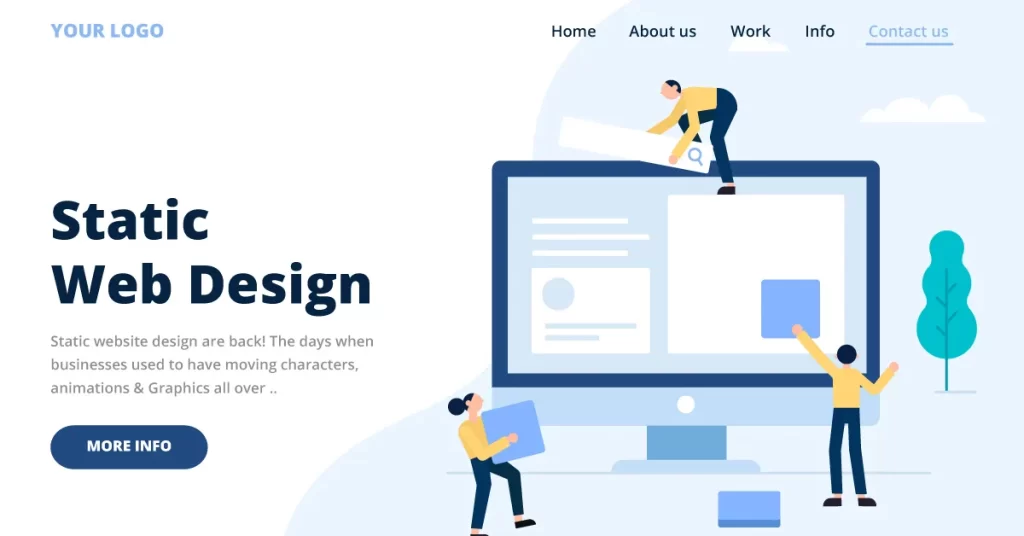Static Website Design

A static website is a type of website that consists of web pages with fixed content that does not change dynamically. In other words, the content of a static website remains the same for all visitors and is typically created using HTML, CSS, and sometimes a bit of JavaScript. Unlike dynamic websites, where content is generated on-the-fly and often pulled from a database, static websites are pre-designed and pre-coded before being uploaded to a web server.
Advantages of Static Websites:
Simplicity: Static websites are simple and quick to create. Since they don’t require complex server-side scripting or database connections, they can be developed relatively faster.
Speed: Static websites load quickly because there is no processing required on the server side. This can result in a better user experience and improved search engine rankings.
Security: Because static websites don’t involve database interactions or dynamic scripting, they are generally more secure. There are fewer vulnerabilities that hackers can exploit.
Cost-Effective: Static websites are often cheaper to host and maintain since they don’t require server-side technologies, databases, and dynamic content management systems.
Hosting Flexibility: Static websites can be hosted on any web server that supports HTML and CSS. They don’t require specific server configurations or technologies.
Reliability: Since static websites don’t rely on server-side processing or databases, they are more reliable and less likely to experience downtime due to server issues.
Design Process for Static Websites:
Planning: Understand the purpose and goals of the website. Identify the target audience, content structure, and design elements needed.
Content Creation: Write the content for each page. This can include text, images, videos, and other media.
Design: Create the visual design of the website using HTML and CSS. Decide on the layout, typography, color scheme, and overall style.
Coding: Code each web page using HTML for structure and content, CSS for styling, and JavaScript if needed for any interactive elements.
Responsive Design: Ensure the website is responsive, meaning it adapts to different screen sizes and devices like smartphones, tablets, and desktops.
Testing: Thoroughly test the website on various browsers and devices to ensure consistent functionality and appearance.
Optimization: Optimize images, scripts, and other assets to improve loading speed and performance.
Final Review: Review the entire website to make sure all elements are functioning as intended and the design is consistent.
Deployment: Upload the static files to a web server using FTP or other deployment methods.
Tools for Static Website Design:
Text Editors: Tools like Visual Studio Code, Sublime Text, and Atom are commonly used for coding HTML, CSS, and JavaScript.
CSS Frameworks: Frameworks like Bootstrap and Foundation provide pre-designed components and responsive grids that can speed up the design process.
Image Editors: Software like Adobe Photoshop or free alternatives like GIMP help in editing and optimizing images for the web.
Version Control: Tools like Git help in tracking changes to the codebase and collaborating with a team.